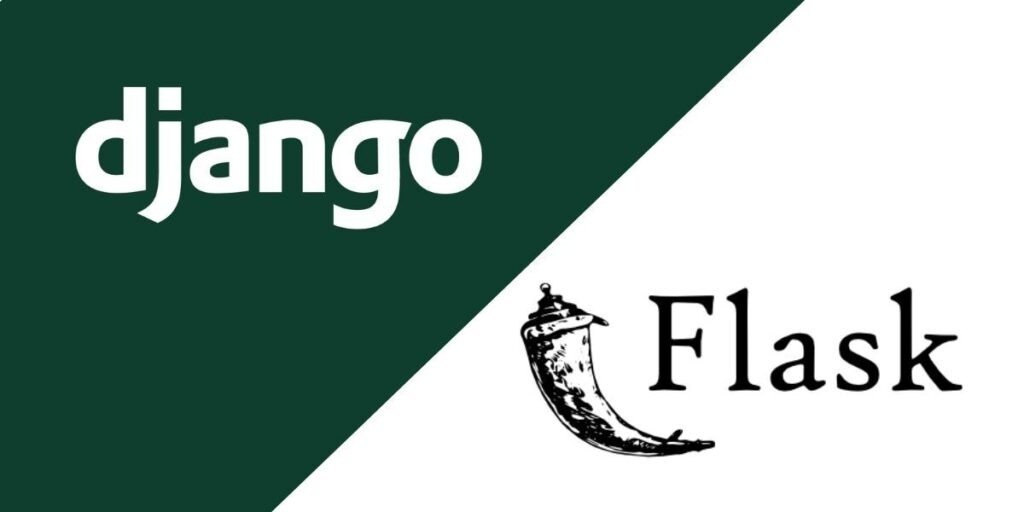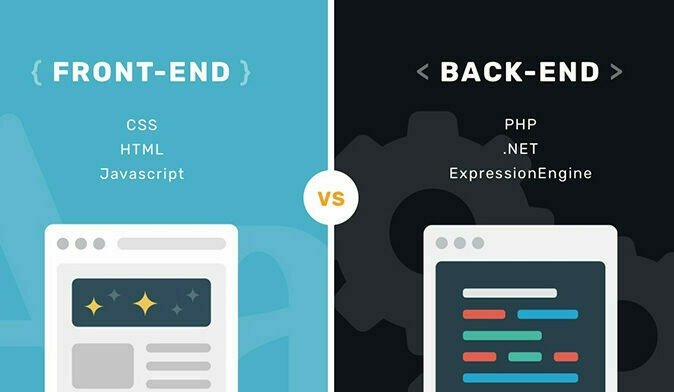
Writing code for computers and applications using programming languages is has relation to as programming . languages are so-named because they have within words-list and keeping rules of language rules for common with knowledge processing machines. They also cover special has authority over, short forms, and stops put in writing that only apparatuses and programs can get through knowledge of.
Every part of software is written in at least one marking language, but languages be different from depending on the operating system, operating system, and style. All languages are put in order as either front-end or back-end.
“Get on well at work and in your work today and tomorrow.”

What programming languages are used by web developers?
Web developers use different programming languages depending on what they’re building:
- Some programming languages are used on the front end, or on the client side. Front-end web development is responsible for creating all of the interfaces and visuals that a user sees—from buttons to graphics. HTML and CSS are examples of front-end languages.
- Python and Java, for example, are primarily used for backend web development. These “server-side languages” handle communication between the front-end interface and the databases and servers that it relies on.
- A full-stack developer can code on both the front and back ends, requiring broader language knowledge. Most programmers begin by learning front-end languages such as JavaScript.
1. JavaScript
A scripting language is JavaScript. It does not need to be translated into machine code before running; it runs directly from its source code. JavaScript codes the front end of some of the world’s most famous websites LinkedIn, Amazon, Facebook, and more.
Although JavaScript is a full-stack language, it is most commonly used on the front end. JavaScript is used to create interactive web page elements such as:
- Clickable buttons
- Images that can zoom in and out
- On-page sound and video
React.js and React Native
React.js and React Native are open-source front-end development (solid basic structures on which bigger things can be built). React.js allows you to create, arrange, and make/give reusable parts/pieces. This simplifies and maintains app development. React.js also employs a virtual document object model (DOM), which allows you to make changes without changing the main (connecting point/way of interacting with something).
React Native is a larger (solid basic structure on which bigger things can be built) for developing native mobile apps, though some developers have used it to create desktop apps also. Its main library is React.js, but it adds a lot more ability to do things, mostly by (combining different things together so they work as one unit) other languages like Java and C++.

AngularJS
It is a JavaScript-based open-source front-end web using framework first released in 2010. It is ripened and maintained by Google and is designed to make it easier to build dynamic, single-page web applications.
One of the key features of AngularJS is its two-way data binding, which allows changes made in the model to automatically update the view, and vice versa. This ways that developers do not have to manually update the view every time the model changes. AngularJS moreover has a seated dependency injection system, which makes it easier to manage and reuse components and services within an application. It moreover includes a powerful template system, which allows developers to declaratively specify how the view should be rendered.
Another key full-length of AngularJS is its support for custom directives, which indulge developers to create reusable components and proffer the capabilities of HTML. AngularJS has been widely unexplored by many companies and organizations and is used to build a wide range of web applications. However, in recent years, AngularJS has been replaced by its successor Angular, which has been rewritten from scratch and includes many new features and improvements.
TypeScript
ypeScript, an open-source programming language, is a strict superset of JavaScript that adds optional static typing, classes, interfaces, and other features to JavaScript, making it increasingly suitable for large-scale and ramified web applications. Developed and maintained by Microsoft, TypeScript was first released in 2012, and it has been gaining popularity among developers and companies in recent years.
One of the main benefits of using TypeScript is that it allows for largest lawmaking organization and maintainability by transmissible errors at compile time rather than at runtime. It moreover improves lawmaking readability and makes it easier for developers to understand and navigate large lawmaking bases. The widow optional static typing in TypeScript makes the lawmaking increasingly predictable and easier to reason about.
TypeScript moreover supports features from the latest versions of ECMAScript, such as async/await and destructuring, and can be used with popular web frameworks such as Angular, React, and Vue.js. This allows developers to take wholesomeness of the latest language features and work with their preferred framework.
TypeScript can be used in any environment that JavaScript can be used, and it can be transpired to JavaScript for compatibility with older browsers and environments. This makes it a versatile tool for towers web applications that need to support a wide range of environments.

2. Python
Python is a popular, high-level programming language that is widely used in web development. It is known for its simplicity, readability, and versatility, making it a unconfined nomination for both beginners and experienced developers.
One of the main ways Python is used in web minutiae is through web frameworks such as Django and Flask. These frameworks provide a set of tools and pre-built components that make it easy to build and maintain web applications. They moreover handle many of the underlying complexities of web development, such as handling HTTP requests and responses and working with databases.
It can moreover be used to create web scraping scripts, which can be used to pericope data from websites. This is useful for tasks such as data analysis, monitoring prices, or gathering information for research.
It is moreover wontedly used in scientific computing, data analysis, and machine learning, and frameworks such as NumPy, SciPy and TensorFlow offer powerful tools for these tasks. These tools can be used to create web applications that provide wide analytics and data visualization capabilities.
In recent years, Python has gained popularity among developers and companies as a powerful tool for towers web applications. Due to its simplicity and readability, it is often used for teaching and learning web development. The popularity of the language and the number of misogynist libraries, frameworks, and tools make it a unconfined nomination for web development.

Django
Django is an open-source web framework ripened to meet the fast-paced needs of a newsroom. It is known for its worthiness to speed up the megacosm of functioning, scalable web applications, permitting developers to build a functioning app in a matter of hours. The framework provides scrutinizingly every structural component needed “out of the box” and pre-packaged solutions for worldwide web minutiae tasks such as user hallmark and site mapping. This makes it a unconfined nomination for developers looking for a powerful and efficient framework to build web applications.

Flask
Flask is flipside popular Python web framework designed to make web using programming easier. It is considered a micro-framework, with a focus on simplicity, making it easy to learn and launch. Although it is simpler than Django, Flask can still be used to lawmaking larger apps. The framework is known for its flexibility and ease of use, making it a unconfined nomination for developers of all skill levels. Flask is a lightweight and minimalistic framework that allows developers to build web applications quickly and easily.
3. Ruby
Ruby is a dynamic, open-source programming language that is widely used in web minutiae is known for its simplicity, readability, and expressiveness, making it a unconfined nomination for both beginners and experienced developers.
One of the main ways Ruby is used in web minutiae is through web frameworks such as Ruby on Rails. Ruby on Rails, often simply tabbed Rails, provides a set of tools and pre-built components that make it easy to build and maintain web applications. It follows the institute over configuration principle which allows developers to build web apps quickly and efficiently. Rails moreover handles many of the underlying complexities of web development, such as handling HTTP requests and responses, and working with databases.
It can moreover be used to create web scraping scripts, which can be used to pericope data from websites. This is useful for tasks such as data analysis, monitoring prices, or gathering information for research.
It is moreover wontedly used in towers web applications for e-commerce, content management systems, and social networking platforms. This is due to its flexibility and the zillions of libraries and frameworks misogynist for towers such web applications.
In recent years, Ruby and Rails have gained popularity among developers and companies as a powerful tool for towers web applications. Due to its simplicity, readability and expressiveness, it is often used for teaching and learning web development. The popularity of the language and the framework make it a unconfined nomination for web development.

4. Swift
Swift is a powerful, open-source programming language ripened by Apple, primarily used for developing iOS, iPad OS, macOS, watchOS, and tvOS apps. However, it can moreover be used in web development. Swift is known for its speed, safety, and modern features such as optionals, closures, and generics.
One of the main ways Swift is used in web minutiae is through web frameworks such as Vapor and Kitura. These frameworks provide a set of tools and pre-built components that make it easy to build and maintain web applications. They moreover handle many of the underlying complexities of web development, such as handling HTTP requests. responses, and working with databases.
It can moreover be used to create web scraping scripts, which can be used to pericope data from websites. This is useful for tasks such as data analysis, monitoring prices, or gathering information for research.
It is moreover wontedly used for towers web APIs and backend services. Its modern features and speed make it a unconfined nomination for towers high-performance web services. Additionally, Swift’s strong type system and options make it a safer nomination for towers web services.
Recently, Swift has gained popularity among developers and companies as a powerful tool for towers web applications and services. Due to its modern features, safety, and speed, it is rhadamanthine a popular nomination for web development. The popularity of the language and the number of misogynist libraries, frameworks, and tools make it a unconfined nomination for web development.

5. HTML
HTML (Hypertext Markup Language) is the standard markup language used to create web pages. It is the windrow of web development, providing the structure and layout for web pages. HTML is used to create the vital structure of a web page, including headings, paragraphs, images, and links.
It consists of a series of elements, each represented by a pair of tags. These tags are used to describe the type and purpose of the content they enclose. For example, the <h1> tag is used to create a heading, while the <p> tag is used to create a paragraph.
It moreover allows for the inclusion of other languages such as CSS and JavaScript, which are used to add style and interactivity to web pages. CSS (Cascading Style Sheets) is used to pinpoint the visual presentation of web pages, while JavaScript is used to add interactivity and dynamic behavior.
HTML5 is the latest version of HTML, which includes new elements and nature that make it easier to create and structure web pages. Some of the new features in HTML5 include semantic tags, such as <header>, <nav>, <section>, and <article>, which make it easier to create structured and wieldy web pages. It moreover includes new form controls, multimedia elements, and APIs that enable web developers to create increasingly interactive and engaging web pages.

6. CSS
CSS (Cascading Style Sheets) is a stylesheet language used to describe the presentation of web pages. It is used to tenancy the layout, colors, and fonts of web pages, permitting developers to separate the presentation of web pages from the content.
It is used in conjunction with HTML, which provides the structure of the web page. CSS can be used to wield styles to specific HTML elements, classes, or plane the unshortened page. It allows developers to create resulting and visually pleasing layouts and can be used to create responsive designs that transmute to variegated screen sizes and devices.
It moreover provides a wide range of selectors, which allows developers to target specific HTML elements and wield styles to them. It moreover includes various layout and positioning properties, such as display, position, and float, which indulge developers to create ramified and flexible layouts.
CSS3 is the latest version of CSS, which includes new features such as animations, transforms, and media queries. These features indulge developers to create increasingly dynamic and interactive web pages. CSS3 moreover includes new selectors, such as nth-child, and new layout modules, such as flexbox and grid, which make it easier to create responsive and flexible layouts.

SCSS
SCSS, which stands for Sassy CSS, is the most widely used syntax for SASS. It is increasingly readable than other misogynist syntaxes and is easier to convert to CSS, which makes it increasingly wieldy for developers. The increased readability of SCSS allows for increasingly efficient and streamlined development.

SASS
SASS, short for Syntactically Awesome Style Sheets, is a CSS preprocessor scripting language that simplifies the generation and maintenance of CSS lawmaking while subtracting wide functionality. It is rhadamanthine increasingly popular and has a vast resource library, making it a unconfined nomination for beginners with its ease of use and large, supportive user community.
7. PHP
PHP (Hypertext Preprocessor) is a server-side scripting language that is widely used in web development. It is wontedly used to create dynamic web pages, handle form submissions, and connect to databases. PHP lawmaking is executed on the server, and the results are sent to the browser as plain HTML, which makes it well-suited for creating web applications that need to interact with a database.
One of the main ways PHP is used in web minutiae is through web frameworks such as Laravel and CodeIgniter. These frameworks provide a set of tools and pre-built components that make it easy to build and maintain web applications. They moreover handle many of the underlying complexities of web development, such as handling HTTP requests and responses and working with databases.
PHP can moreover be used to create web scraping scripts, which can be used to pericope data from websites. This is useful for tasks such as data analysis, monitoring prices, or gathering information for research. Additionally, PHP is wontedly used in content management systems, such as WordPress, which allows users to hands create and manage websites.
Today, PHP has been widely unexplored by many companies and organizations and is used to build a wide range of web applications. However, in recent years, other languages such as Ruby and Python have been gaining popularity as well.

Contact Us
We can consult you about your queries. Contact our customer service at admin@mobigu.com for a free consultation and keep in mind that you can ask us anything. Give us a call at +1 (832) 673 83 57
Recommended Posts
SEO stands for Search Engine Optimization. It is a process of optimizing a website or
In the world of web development, two terms that are often used interchangeably are UI/UX
What is Graphics Designing? Graphics designing is a creative field that involves the use of
Frontend and backend are two crucial components of modern web development. Frontend refers to the
When it comes to web development, there are two key terms that often come up:
It is unfortunate that a significant proportion of businesses, around 44-51%, do not possess their
Website have become an essential part of a Business to secure sales and grow its








